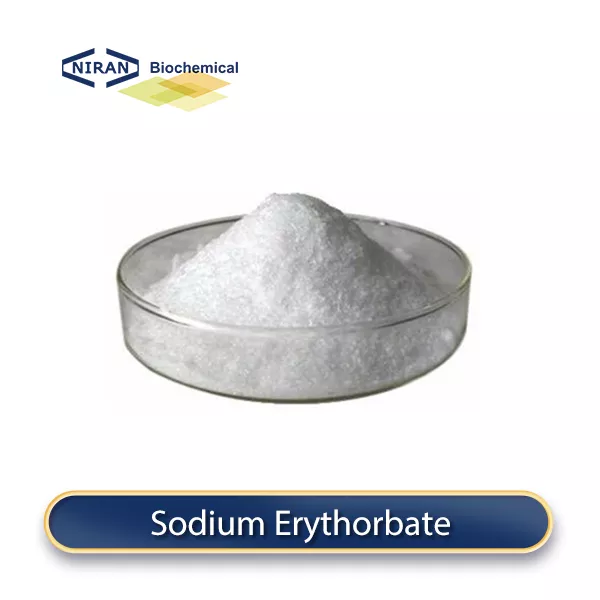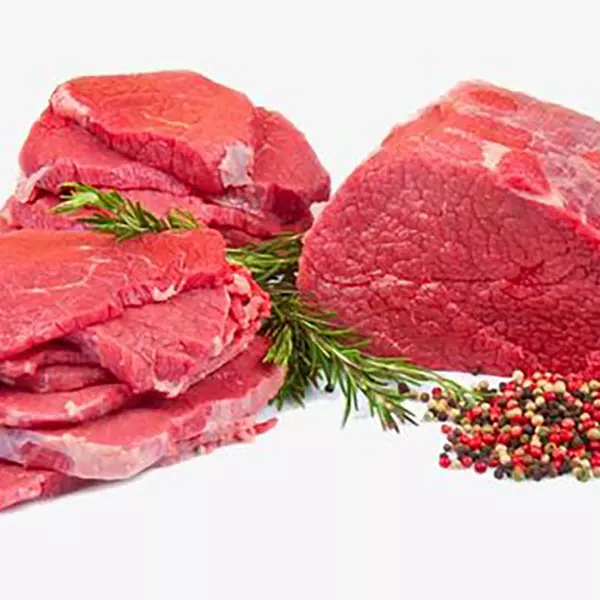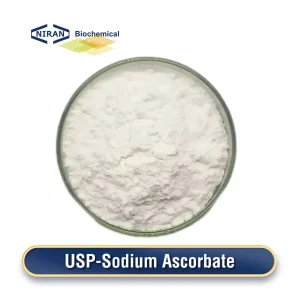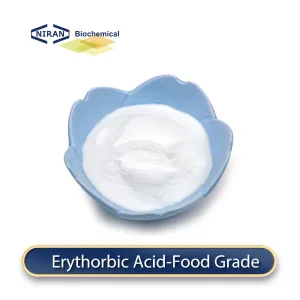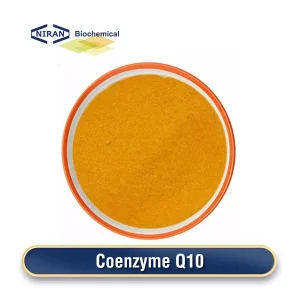What is Sodium Erythorbate?
A novel class of bio-based food antioxidant, preservative, and color enhancer is sodium erythorbate. It prolongs food’s shelf life, preserves its color and natural flavor, and has no harmful side effects. It appears as white to yellow-white crystals or crystalline powders, and is widely used in the food industry.
There are mainly the following methods for preparing sodium erythorbate in China:
1. Sodium Erythorbate is prepared by reacting dehydrogenated vitamin C with sodium salts (such as sodium hydroxide). Using this procedure, the purity and yield of the product are guaranteed by regulating the reaction conditions in a laboratory or on industrial equipment. After the reaction, it is purified by methods such as solvent extraction and crystallization to obtain high-purity Sodium Erythorbate. Because chemical synthesis is inexpensive and produces large yields, it has become the preferred method of preparation.
2. Sodium Erythorbate is produced during fermentation using specific microorganisms. By using suitable culture media and optimizing fermentation conditions, microorganisms are able to convert raw materials into target products. Subsequently, Sodium Erythorbate is extracted from the fermentation broth through extraction and purification steps. Although biological methods have advantages in terms of environmental protection and sustainability, their production costs and technical complexity are generally high.
Related parameters:
| Items | Standards |
| Identification | Positive |
| Assay(C6H7O6Na・H2O) | 98.0%~100.5% |
| Specifie rotation[α]D25 | +95.5°~+98.0° |
| pH (1:20) | 5.5~8.0 |
| Lead | 2 PPM Max |
| Heavy metals(as Pb) | 10 PPM Max |
| Arsenic | 3 PPM Max |
| Loss on drying | 0.25% Max |
| Oxalate | Passes test |
Recommended dosage:
| Food name | Maximum usage(g/kg) |
| Fruit juice drinks | 0.1-0.2 g/kg |
| Sports drinks | 0.05-0.1 g/kg |
| Canned foods | 0.1-0.2 g/kg |
| Sauces | 0.1-0.2 g/kg |
| Meat products | 0.1-0.2 g/kg |
| Bakery | 0.05-0.1 g/kg |
| Frozen foods | 0.05-0.1 g/kg |
| Biscuits | 0.05-0.1 g/kg |
| Jelly | 0.05-0.1 g/kg |
| Chocolate | 0.05-0.1 g/kg |
| Dried fruits | 0.1-0.2 g/kg |
| Protein powder | 0.05-0.1 g/kg |
Sodium Erythorbate has a wide range of uses
1. By preventing fats and oils in food from oxidizing, sodium erythorbate, an efficient antioxidant, prolongs the shelf life of food while preserving its flavor and nutritional content.
2. By inhibiting the oxidation of phenolic compounds, Sodium Erythorbate can effectively reduce browning in foods and maintain the color and appearance of foods.
3. During food processing, Sodium Erythorbate can improve the stability of foods and prevent the degradation and failure of food ingredients.
4. By reducing oxidation reactions, it helps maintain the original flavor and taste of foods and prevents taste changes caused by oxidation.
User asked question:
Q: Is sodium erythorbate the same as vitamin C?
A: Although both sodium erythorbate and vitamin C have antioxidant effects, they are not the same. An isomer of vitamin C called sodium erythorbate is mostly utilized as an antioxidant in food. It can effectively prevent food oxidation and browning and has good stability.
In contrast, vitamin C plays an important nutritional role in the body, such as supporting the immune system and collagen synthesis, but it is relatively unstable and easily degraded during food processing and storage.

